QCF: DmC: Devil May Cry
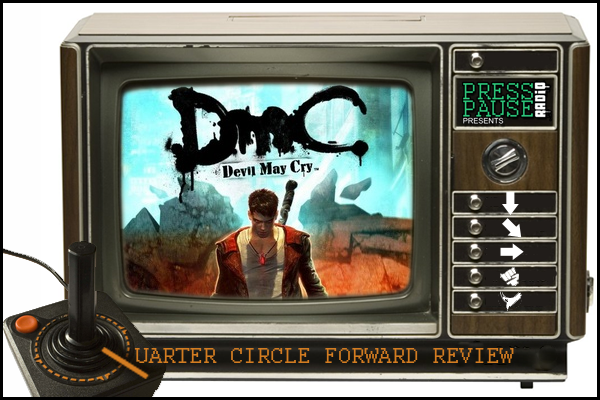
 inja Theory incites a bit of a binary response whenever you mention their name. They’re either applauded for their expertise in captivating characterization and cinematic presentation that’s ahead of the curve amongst today’s games, or they’re lambasted for compromising gameplay for presentation with shoddy technical execution of the core design down to even the most fundamental game mechanics. The Devil May Cry series is praised for both of these aspects. As you can see, the hit-or-miss studio had their work cut out for them rebooting the celebrated demon-slaying franchise in the manner they aimed for when the game was first showcased back in 2010.
inja Theory incites a bit of a binary response whenever you mention their name. They’re either applauded for their expertise in captivating characterization and cinematic presentation that’s ahead of the curve amongst today’s games, or they’re lambasted for compromising gameplay for presentation with shoddy technical execution of the core design down to even the most fundamental game mechanics. The Devil May Cry series is praised for both of these aspects. As you can see, the hit-or-miss studio had their work cut out for them rebooting the celebrated demon-slaying franchise in the manner they aimed for when the game was first showcased back in 2010.
After experiencing the new Dante and his latest caper first hand, I can assure you that the party has indeed gotten crazier, and you should all RSVP the first chance you get.
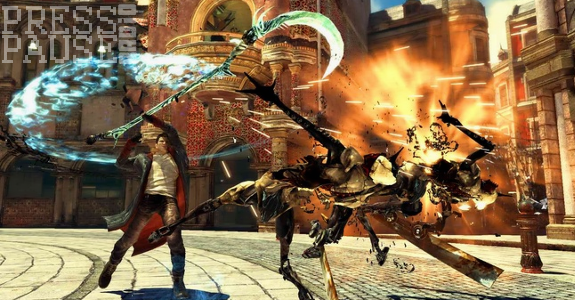
Dante and the universe of Devil May Cry have always stood out among players ever since its debut on PlayStation 2. With that in mind, it’s really easy to assume that the drastic overhaul in Dante’s appearance in DmC would be the first hurdle for the studio to jump, especially considering the initial negativity from fans of the series at the redesign (myself included). However, in spite of what you’ll hear from most fans, that’s not the main attraction of Devil May Cry. No, that honor goes to the frenetic combat of the series. You know, that 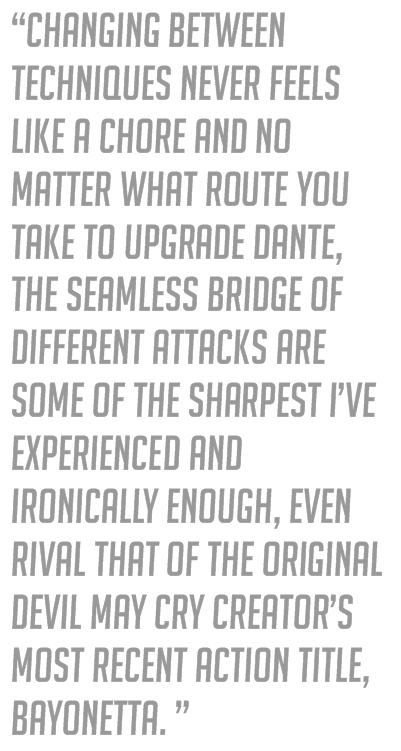 constant, fluid movement, quick chaotic exchanges of bullets and blades combined into aerial feats of violence and mayhem against ever stacking odds of enemies. It’s all here the way you expected, and then some. Ninja Theory has delivered in spades.
constant, fluid movement, quick chaotic exchanges of bullets and blades combined into aerial feats of violence and mayhem against ever stacking odds of enemies. It’s all here the way you expected, and then some. Ninja Theory has delivered in spades.
The user input for Dante’s flashy techniques have never felt sharper. You’ll find yourself getting accustomed to his growing array of moves and weapons that can seamlessly intertwine with one another. Each move has its own set of balances that make them more effective against certain enemy types, and while the game is quick to inform you on several different play tips and techniques to ensure that you get the most out of the combat, it’s all unnecessary when the control and response is this organic.
The most distinctive quality in Dante’s arsenal of abilities are the element of the angel and demon grabs. Switching between the grapple that either will launch you towards then enemy, or vice versa, is the main cornerstone of fighting system’s foundation.
To paint you a plausible scenario: A demonic pull disarms an enemy’s shield, which presents the opportunity for an angel pull. When you follow up with the pull, you’ll catapult yourself into your foe and be able to uppercut your helpless opponent into the air. The freedom of choosing between whether or not you’ll pull them back down or pull yourself up with blade in-hand is what constantly keeps the battling so frenetic. Hell, just seeing them float as you launch a ballistic barrage of bullets to slowly break their fall back down to the ground seems amazing.
The act of knowing when to switch between pulls may seem confusing, but the design of each encounter with enemies is brilliantly structured in order to teach you how to utilize these moves effectively first hand, melting away any apprehension you may have had. After the first few fights, you’ll find that your eyes can successfully communicate all the work demanded from your fingers in order to pull off these spectacles of combat, and the gratification it brings never gets old.
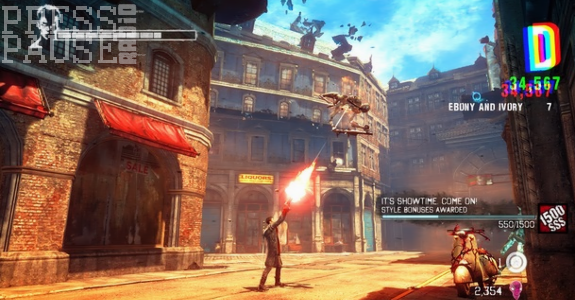
Bridging what makes the pulls feel so effective is the other corner stone of the combat system: The variable selection of moves and weapons that you possess and how they expertly play a vital role. Every enemy mob encounter has an ingeniously deliberate setup in order to slowly mold you into a bad-ass. Ranks vary to a degree, so your odds of survival will be paper thin if you just stick to the same technique. Changing between techniques never feels like a chore. No matter what route you take to upgrade Dante, the seamless bridge of different attacks are some of the sharpest I’ve experienced. And ironically enough, even rival that of the original Devil May Cry creator’s most recent action title, Bayonetta.
The variation of techniques also affect your combat style grade, and will also determine your overall success since they wield scores of white orbs. This system also motivates players to attempt different fighting styles, and makes the combat system one of the best you’ll ever experience. In fact, it’s almost perfect -- there’s just one really annoying snag.
The biggest complaint against combat (and it’s something that significantly holds hit back to simply rivaling Shinji Mikami’s gun-toting witch instead of besting her) is the evade system. Its execution and effectiveness is disappointingly shallow in contrast to everything else within the fighting mechanics. Other than the limited control and slight lag of response for the evade-dodge, the one factor that really hurts it is the fact that it cannot break a combo. This means that if you’re in a chain of sword/demonic weapon strikes and you spot an incoming strike elsewhere, you’re helpless to avoid it since you’ve already committed to your combo. It’s incredibly frustrating when the difficulty starts ratcheting up.
The iconic orb currency returns in this iteration and progression has also been wisely tweaked to where upgrades are not only far less nerve-wracking, but provide you more room to experiment with Dante's personalization. Upgrade purchases are handled by collecting white orbs previously mentioned instead of the same collectible red orbs. This alteration of the all too familiar progression dynamic means that the stressful micro-management involved between spending red orbs on either items or upgrades is no longer present. Despite what could be said about this element being one of the factors that make up the series famous difficulty, this change is arguably the most welcomed one.
Surprisingly, there’s a lot of platforming in this title. We’re talking stages that scream, "platform till you die." The angelic and demonic pull also play key factors as you’ll switch between the celestial zip-lines that will latch platforms towards you or launch you at them, couple this with some double jumping and dashes and you end up with a lot of jumping, and it’s a bit stiff, in stark contrast to movement and combat. The jumping isn’t broken but it’s far from polished and it happens a bit too often, which is something that wouldn’t be an issue had it been refined a lot more; ultimately, it’s annoying blemish on the experience but hardly a crack in it.
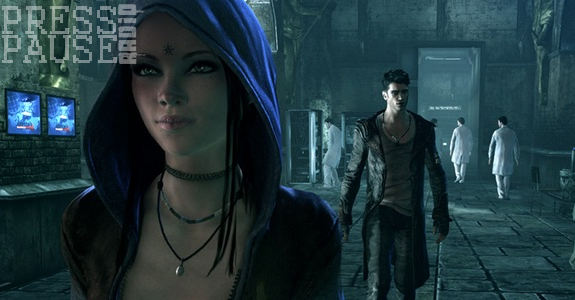
The story and writing is set with a more western feel, relatable to that of Vertigo’s Constantine or Miramax’s Crow film series, Dante stumbles into his role of being a demon slayer, yet still shares his own history of how the super natural affected him and how he slowly grows into the role he plays. The amnesiac origin is far beyond the label of cliché and the script is crammed with shallow swearing, the significant exchanges of dialogue between the lead characters fits both the pacing and the characterization nicely and over the course of the titles, gives the character depth that can be relatable in contrast to his white-haired Japanese counterpart. The concept of parallel worlds is another familiar trope and yet the idea that Dante is constantly flung into quote unquote “Limbo” in order to combat demons while reality goes on without him on the other side grounds the series with a realistic approach and this appeal is inherent in the visual design of the real world’s warped counterpart.
Overall, my expectations were low, in fact they were exceptionally low given the quality of the Studio’s past works, but DmC stands above, taller than nearly all of its contemporaries and is mandatory for both character action game fans and those looking to sample the genre with it’s brilliant and accessible combat structure and entertaining story direction.
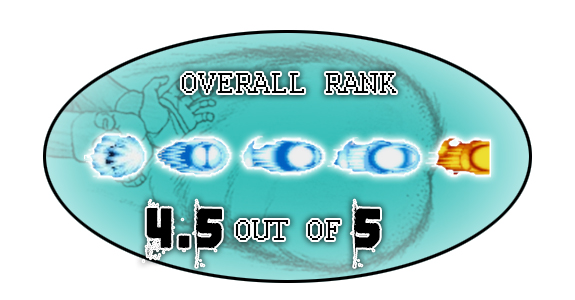
 Amazing,
Amazing,  Capcom,
Capcom,  Devil May Cry,
Devil May Cry,  DmC,
DmC,  action games | in
action games | in  QCF Reviews
QCF Reviews 









